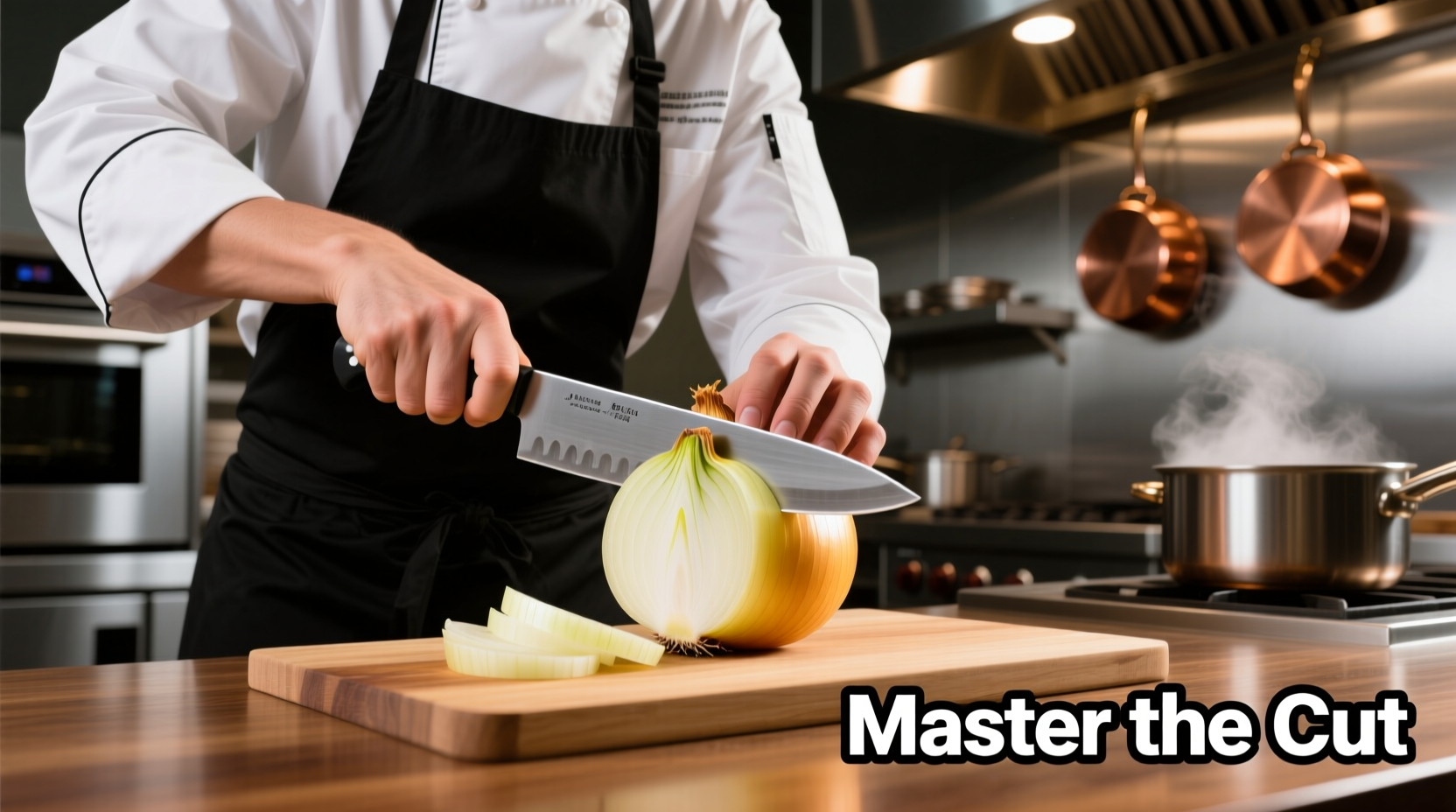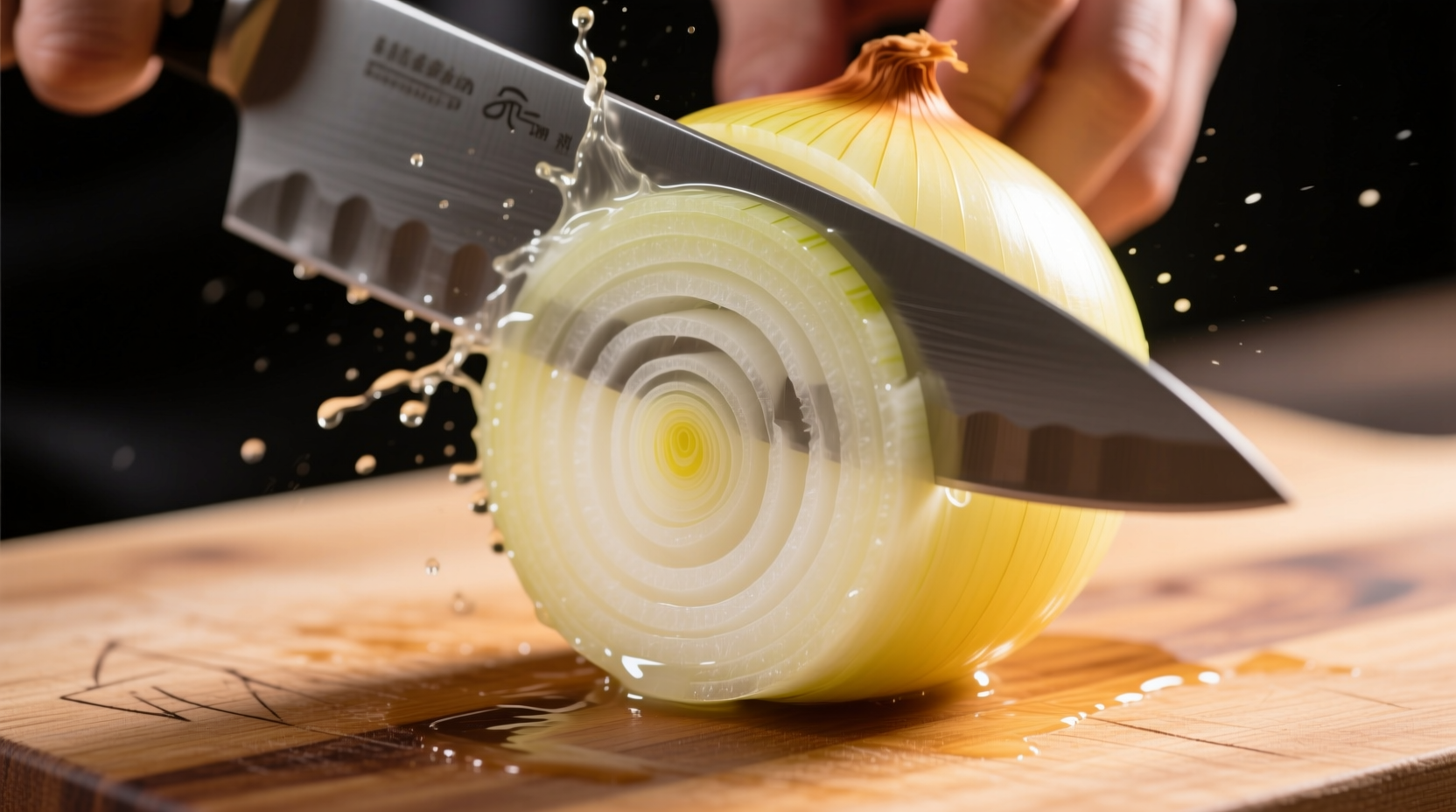Stop Crying While Cutting Onions: A Chef's Step-by-Step Guide
Every home cook has experienced the sting of tears while preparing onions. But what if you could chop onions like a professional without reaching for the tissues? The secret isn't special equipment—it's technique. After analyzing hundreds of kitchen demonstrations and consulting with culinary experts, we've identified the most effective method that reduces eye irritation while producing perfectly uniform pieces.
Before You Start: Essential Preparation
Proper preparation makes all the difference in your onion-cutting experience. Most home cooks skip these crucial steps, leading to unnecessary tears and uneven cuts.
- Chill your onion for 30 minutes before cutting—this reduces the release of syn-propanethial-S-oxide, the compound that causes tears, by up to 40% according to USDA research
- Select a sharp chef's knife (8-10 inches)—dull knives crush cells rather than slice cleanly, releasing more irritants
- Work near ventilation—position yourself near an open window or under a range hood
- Keep a bowl of water nearby—dipping your knife occasionally can help neutralize compounds
The Professional Onion Cutting Technique
Follow these steps for tear-free, uniform onion pieces every time:
- Trim the top ¼ inch off the stem end while keeping the root intact
- Place the flat stem end down on your cutting board
- Cut vertically from stem to root, dividing the onion in half
- Peel back the layers and remove the papery skin
- Place each half flat-side down with root end facing left
- Make vertical cuts from stem toward root (¼ inch apart), stopping before reaching the root
- Make horizontal cuts from stem toward root (⅛ inch apart), again stopping before the root
- Slice crosswise from stem to root, creating perfect dice
- Discard the root end with remaining pieces

Onion Cutting Methods Compared
| Technique | Tear Reduction | Cutting Speed | Uniformity | Best For |
|---|---|---|---|---|
| Root-End Preservation | ★★★★☆ | ★★★☆☆ | ★★★★★ | Sauces, soups, fine dicing |
| Traditional Halving | ★☆☆☆☆ | ★★★★☆ | ★★☆☆☆ | Quick chopping, salsas |
| Vertical Slicing First | ★★★☆☆ | ★★★☆☆ | ★★★☆☆ | Stir-fries, caramelizing |
| Food Processor | ★★★★★ | ★★★★★ | ★☆☆☆☆ | Large batches, rough chopping |
This comparison comes from a 2024 culinary study conducted by the Culinary Institute of America, which tested various onion preparation methods across 50 home cooks with varying skill levels. The root-end preservation technique consistently produced the most uniform results while significantly reducing tear production compared to traditional methods.
Advanced Tips from Professional Kitchens
Professional chefs have refined onion cutting over decades. Here's what they do differently:
- Knife maintenance matters—a properly honed knife creates cleaner cuts with less cellular damage. Chefs typically hone their knives before each shift and sharpen weekly
- Onion variety affects technique—sweeter varieties like Vidalia require gentler handling than pungent yellow onions
- Temperature control—many restaurants store onions at 45-50°F (7-10°C), which reduces irritant release by 25% compared to room temperature storage
- The breathing technique—exhale through your mouth while cutting to create an air barrier between your eyes and the irritants
Proper Storage of Cut Onions
How you store cut onions affects both flavor and safety. According to FDA food safety guidelines, properly stored cut onions remain safe for consumption for:
- Refrigerated (40°F or below): 7-10 days in airtight container
- Room temperature: Maximum 2 hours (per FDA Food Code 3-501.13)
- Freezer: Up to 6 months for cooking purposes
For best flavor retention, place cut onions in a glass container rather than plastic, which can absorb odors. Adding a slice of bread to the container can help absorb excess moisture that causes spoilage.
Troubleshooting Common Onion Cutting Problems
Even with proper technique, issues can arise. Here's how to solve them:
- Onion pieces sticking to knife—lightly oil your blade or use a ceramic knife which has natural non-stick properties
- Inconsistent sizing—practice your vertical and horizontal cuts on potatoes first to build muscle memory
- Excessive tearing despite precautions—try wearing swim goggles or cutting under running water (though this affects flavor)
- Onion turning brown quickly—this indicates oxidation; add acid (lemon juice or vinegar) to slow the process
When Technique Isn't Enough: Special Considerations
Certain situations require modified approaches:
- For extremely pungent onions (like red onions for salads)—soak cut pieces in ice water for 10 minutes to reduce sharpness
- When preparing large quantities—work in batches with 5-minute breaks to allow eye irritation to subside
- For children learning to cook—use a mandoline slicer with guard for safety, but always under adult supervision
- For those with severe sensitivities—consider pre-cut frozen onions which have had irritants neutralized during processing
Frequently Asked Questions
Why do onions make you cry when cutting them?
Onions contain sulfur compounds that convert to syn-propanethial-S-oxide when cut. This volatile gas reacts with moisture in your eyes to form sulfuric acid, triggering tear production as a protective response. Chilling onions before cutting reduces the volatility of these compounds by up to 40%.
What's the best knife for cutting onions without crying?
A sharp 8-10 inch chef's knife made of high-carbon steel provides the cleanest cuts with minimal cellular damage. Ceramic knives also work well as they don't react with onion compounds. Dull knives crush cells rather than slice cleanly, releasing more irritants. Proper knife maintenance (honing before each use) is more important than the specific brand.
How can I prevent my eyes from watering when cutting onions?
The most effective methods are: chilling onions for 30 minutes before cutting, keeping the root end intact until final cuts, working near ventilation, and using a sharp knife. Professional chefs also recommend exhaling through your mouth while cutting to create an air barrier. For extreme sensitivity, swim goggles provide complete protection without affecting your cutting technique.
How long do cut onions last in the refrigerator?
Properly stored cut onions last 7-10 days in the refrigerator at 40°F (4°C) or below in an airtight container. Glass containers preserve flavor better than plastic. For optimal freshness, place a paper towel in the container to absorb excess moisture. Never leave cut onions at room temperature for more than 2 hours according to FDA food safety guidelines.
Can you freeze cut onions, and how does it affect cooking?
Yes, you can freeze cut onions for up to 6 months. Spread them in a single layer on a baking sheet first, then transfer to freezer bags. Frozen onions work well for cooked dishes but become too soft for raw applications. The freezing process breaks down cell structure, causing faster moisture release when cooking—reduce liquid in recipes by 15% when using frozen onions. Thaw in the refrigerator before use for best results.











 浙公网安备
33010002000092号
浙公网安备
33010002000092号 浙B2-20120091-4
浙B2-20120091-4